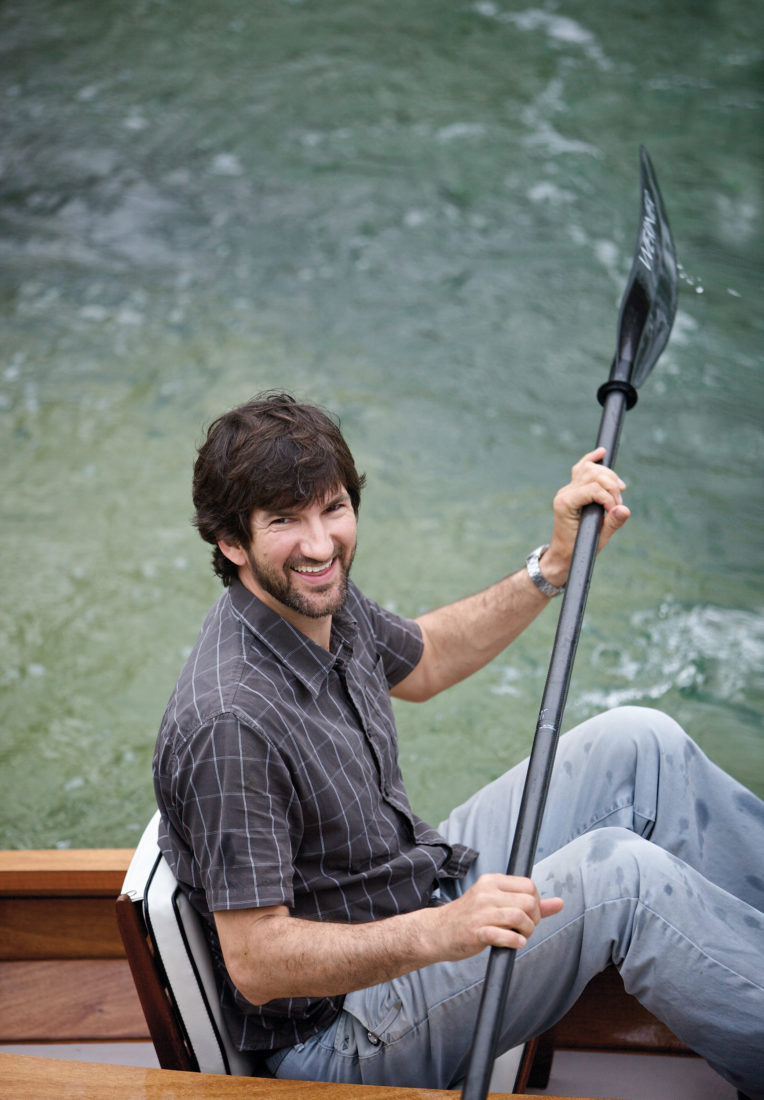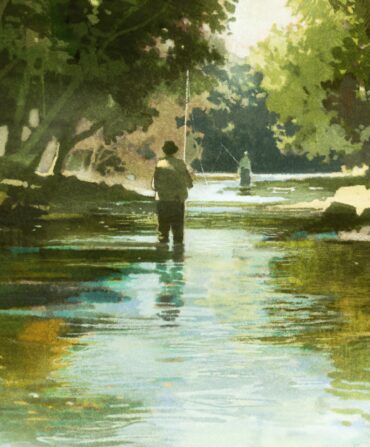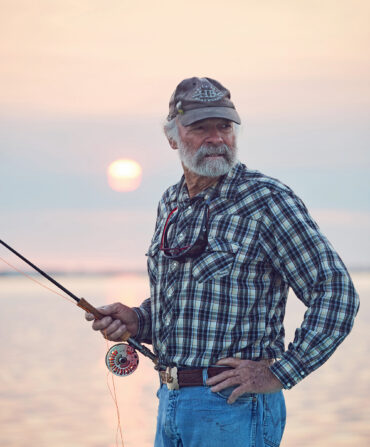A dozen years ago, John Townes “J.T.” Van Zandt built his first wooden fishing skiff. He loaded it onto his pickup and headed for Aquarena Springs near the campus of Texas State University in San Marcos for a paddle. But the boat never reached the water. “It took about a twenty-foot swan dive onto I-35 on the way to its christening,” says Van Zandt, forty. “It was kind of a tub, so I ended up just burying it in my backyard.”
Still, Van Zandt remained obsessed with building the perfect boat for stalking redfish in the shallow waters off the Texas coast. He didn’t like the ride he found in the plastic kayaks that are all the rage along the Gulf of Mexico. Even the lightest models bogged down in the mud and were uncomfortable if you had to stand in them for long. So he studied the time-honored techniques used by wooden boatbuilders, contemplated his options, and eventually dug up the old boat. Then, in 2003, he found an accomplice in David Escobedo, a custom-home builder based on the outskirts of Austin, who saw promise in Van Zandt’s plan. “When I met him, he still had this old boat with him,” says Escobedo, who hired Van Zandt in 2006 to run the cabinet and millwork operation at Escobedo Construction, the soon-to-be parent company of Escobedo Boat Works. “I have a lot of clients who are fly fishermen, and it made sense to cut a new prototype.”
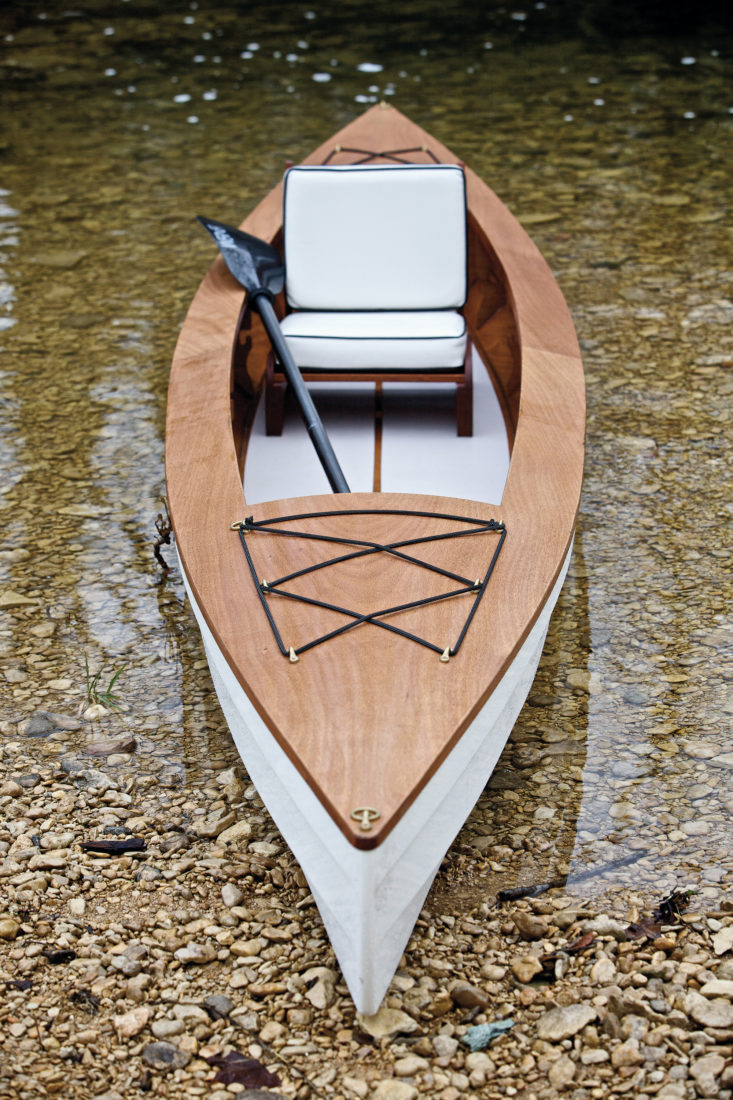
Photo: Jody Horton
Detail Oriented
A completed Sea Dart
Reborn as the Sea Dart, the new boat Van Zandt designed is no longer a tub. Built out of Joubert marine plywood imported from France and certified by Lloyd’s of London, the sixteen-foot decked skiff is a sleek canoe-kayak hybrid. It is tough enough to paddle in swift currents or light surf, yet weighs less than fifty-five pounds, so one person can carry it. A test run on Lake Austin, skipping over speedboat wakes and sliding into bass-friendly feeder creeks, reveals that the Sea Dart tracks arrow-straight, drafts shallow, and is a secure platform for poling or casting. Neither screws nor nails mar the cockpit or slick lacquered deck. That’s because Van Zandt used lapstrake technology, a construction method dating back to Viking times, to join the wood, which was then glued with high-test epoxy, coated with fiberglass, and hand sanded.
As a Texan, Van Zandt came to wooden boatbuilding through a circuitous route. His father was the famed Texas singer-songwriter Townes Van Zandt, who died on New Year’s Day in 1997. Townes’s influence spans a generation of artists from Steve Earle to Lucinda Williams. In the wake of his father’s death, J.T. (who with his dark eyes, flop of brown hair, and sharp features bears an uncanny resemblance) flirted briefly with a career as a professional musician, gigging across Texas and eventually touring Europe. But it was not to be. As he exited his twenties—having worked as a fishing guide in Colorado while gaining experience in the trades—Van Zandt was focused on what might come next.
“One of the proudest associations of my life is as the oldest son of Townes Van Zandt,” says J.T. “My father had the songwriting thing down. But he dreamed of fishing. He dreamed of wooden boats. And I’m sure that affected me, subconsciously at least.”
Photo: Jody Horton
Planing a piece of Spanish cedar for the deck
1 of 3
Photo: Jody Horton
Fastening planks of marine plywood to the hull
2 of 3
Photo: Jody Horton
A finished rod holder
3 of 3
To hear Van Zandt tell it, you don’t need to be a world-class songwriter to be a fine woodworker, but it wouldn’t hurt: “The words are kept inside, but it’s the same dedication and attention to quality that a poet has to have when he writes something.”
Romantic as that sounds, Van Zandt is quick to disabuse potential buyers of the notion that he’s some hermit crafting one-of-a-kind kayaks under a live oak in the Hill Country. Escobedo’s operation uses what’s known as a CNC (that’s computer numerically controlled) machine for milling cabinets and furniture. Once Van Zandt provided company engineers his specs, they used the measurements to create software that would allow the lightning-fast CNC saws to cut precision planks. Under Van Zandt’s close supervision, those parts are assembled by hand, glued, waterproofed, and polished. The process takes three months, and each boat requires about three hundred man-hours to build.
Last summer, the first Sea Dart drew crowds at Sportsman’s Finest, a hunting and fishing outlet in central Texas. An initial run of six boats all but sold out, with Van Zandt keeping two—one private boat and one demonstration model. This summer, he and Escobedo are taking orders for another production run; prices start at around $5,000.
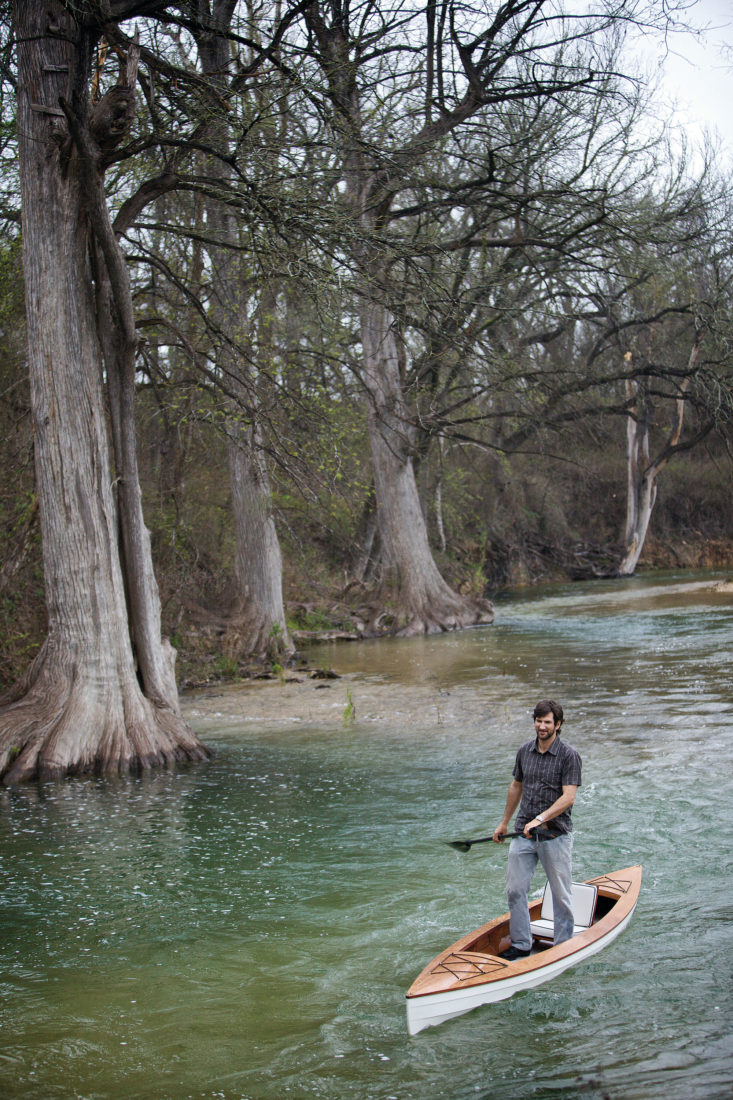
Photo: Jody Horton
Van Zandt shows off the Sea Dart’s stability.
“J.T. has come up with a boat that’s not overbuilt,” says Joe Robinson, a light-tackle guru who runs Sportsman’s fishing department. “You can take it on a stream, but it’s best for flats, and it’s stable enough for an old fart to be able to stand up in it and sight-cast to redfish.”
Following his upcoming wedding this summer, Van Zandt will turn his energy back to boat building. He says he is done “chasing the wind” and ready to settle down: “On the woodworking side of things, I want it to be in great shape and last a long time after I’m gone. That’s what happened with Townes’s music, and I think these boats will do the same thing.”
For more information, go to escobedoconstruction.com


